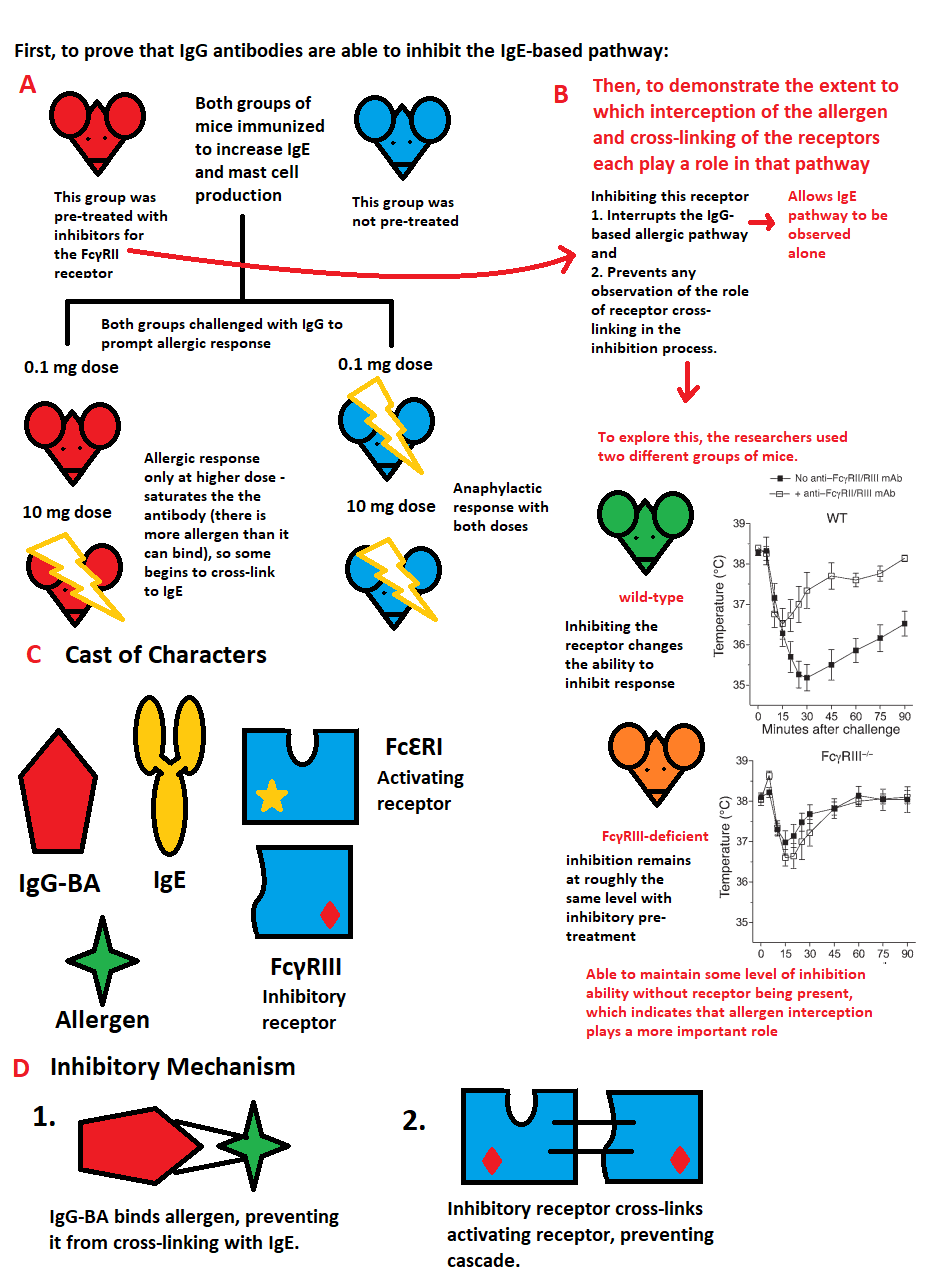Paper 2 – IgG-blocking antibodies inhibit IgE-mediated anaphylaxis in vivo through both antigen interception and FcyRIIb cross-linking24
There is a longstanding hypothesis that IgE-mediated anaphylaxis pathways can be inhibited by the production of IgG antibodies. In this paper, the hypothesis is tested in vivo for the first time. The question of whether IgG blocking antibody (IgG-BA) can inhibit IgE anaphylaxis, by what methods this inhibition can occur, and whether or not alternative anaphylaxis pathways will initiate due to this inhibition of IgE is investigated.
After an unexpected occurrence of IgG mediated anaphylaxis in immunized mice, (immunized against IgD and challenged with IgG), in vivo studies were performed to see exactly how IgE-mediated anaphylaxis was prevented.
Two main ideas were proposed; that IgG-BA intercepted the available, relevant antigen, preventing it from binding to IgE/FcERI on mast cells, or that the IgG cross-linked FceRI to FcyIIb.
Experiments using different dosages of antigen, both wild-type mice and mice primed with anti-FyRII/RIII antibodies, and mice deficient in various immunological proteins (including IgE and FcyRIII) were used to determine the importance of antigen dosage and of the various components of the immune system on blocking/initiating anaphylaxis in mice. Anaphylaxis was measured by hypothermia (a quantifiable result of shock) and hemoconcentration (a quantifiable result of vascular leak).
The results of the study suggest that IgG-BA is able to reduce IgE-mediated anaphylaxis through interception of the antigen binding to IgE, and to a less significant extent, by cross-linking FceRI to FcyRIIb (cross-linking plays an important role only when levels of IgG BA are limited). The results also allowed for the specification of antigen dose requirements for protection of IgG against IgE-mediated anaphylaxis, without causing the alternative IgG/FcyRIII/macrophage anaphylaxis allergic pathway to initiate. If antigen dosage is increased beyond this existing limit, the protective effect of IgG disappears, indicating that therapy with IgG would be most useful for people who are exposed to a low dose of a particular allergen (such as venom from an insect sting).
Some of the details of the study are summarized in the figure below.

Figure 23 – (a) and (b) show two portions of the experimental method; in (a) two groups of mice are used to demonstrate the viability of IgE-blocking antibodies to block the IgE-based allergenic response; in (b) two different groups of mice are used to demonstrate the fact that IgG-blocking antibodies are still effective even without the receptor involved in their receptor cross-linking function. The graphs used in (b) are from the source paper. (c) and (d) summarize the inhibitory action of IgG-blocking antibodies.
Recent Comments